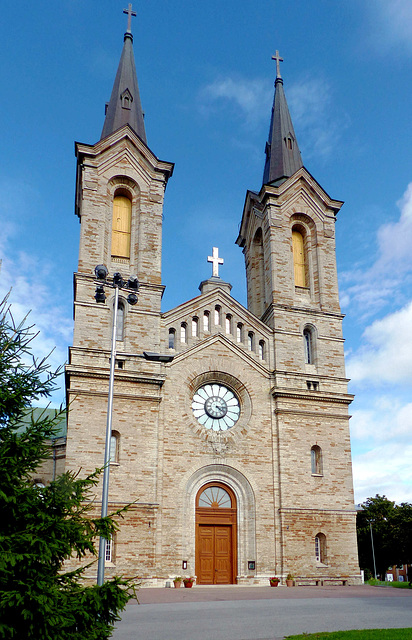Tallinn
Tallinn
Tallinn - Kumu
Tallinn - Kumu
Tallinn - Kumu
Tallinn - Kumu
Tallinn - Kumu
Tallinn - Kumu
Tallinn - Kumu
Haapsalu - Piiskopilinnus
Haapsalu - Toomkirik
Haapsalu - Toomkirik
Haapsalu - Piiskopilinnus
Haapsalu - Piiskopilinnus
Haapsalu
Haapsalu
Haapsalu
Haapsalu
Haapsalu
Märjamaa - Maarja
Märjamaa - Maarja
Märjamaa
Rapla - Maarja-Magdaleena Kirik
Tallinn - Aleksander Nevski katedraal
Tallinn - Aleksander Nevski katedraal
Tallinn - Toomkirik
Tallinn - Toomkirik
Tallinn - Toomkirik
Tallinn - Toomkirik
Tallinn - Suurgildi hoone
Tallinn - Suurgildi hoone
Tallinn - Suurgildi hoone
Tallinn - Oleviste kirik
Tallinn - Schwarzhäupterhaus
Tallinn - Püha Vaimu kirik
Tallinn - Püha Vaimu kirik
Tallinn - Püha Vaimu kirik
Tallinn - Püha Vaimu kirik
Tallinn
Tallinn
Tallinn
Tallinn - Niguliste kirik
Tallinn - Niguliste kirik
Tallinn - Niguliste kirik (PiP)
Tallinn - Niguliste kirik
Location
See also...
Keywords
Authorizations, license
-
Visible by: Everyone -
All rights reserved
-
30 visits
Tallinn - Kaarli kirik


Tallinn, the capital city of Estonia, is situated on the shore of the Gulf of Finland of the Baltic Sea. It is only 80 kilometres south of Helsinki. From the 13th century until the first half of the 20th century Tallinn was known as Reval.
The first recorded claim over the place was laid by Denmark after a raid in 1219 led by Valdemar II. In 1227, the Order of the Brothers of the Sword conquered Reval and three years later recruited 200 Westphalian and Lower Saxon merchants from Gotland, who settled below the castle and were granted freedom of customs and land. In 1238 Reval fell back to Denmark, Under renewed Danish rule, the city rapidly grew in size and economic importance. In 1248, the Danish king granted it the Lübische Stadtrecht (town charter). Due to the strategic location, its port became a significant trade hub, especially in the 14–16th centuries when Tallinn grew in importance as the northernmost member city of the Hanseatic League.
The king of Denmark sold Reval along with other land possessions in northern Estonia to the Teutonic Knights in 1346.
Tõnismägi hill, where the church is located, was the place of probably four previous churches. A sacred place is said to have been there as early as the time of the pagan Estonians. With the Christianisation of Tallinn, a Catholic chapel was probably built in the first half of the 14th century. It was first documented in 1458 and was dedicated to St. Anthony. The building was destroyed in the 16th century during the Livonian War.
A hundred years later, under Swedish rule, a new wooden church was consecrated on the same site. It was named "Charles Church" in honour of the then Swedish King Charles XI. During the Great Northern War the church burnt down in 1710.
In the 1850s and 1860s, the time was favourable for a new church to be built for the Estonian-speaking congregation of Tallinn. The growing self-confidence of the Estonian-speaking population in Tallinn, which was still strongly German-speaking, demanded a prestigious building.
Donations of money were started in the 1850s, the cornerstone of the church was laid in 1862. The church built in a Romanesque Revival style was inaugurated in 1870. The two towers were enlarged in 1882
The first recorded claim over the place was laid by Denmark after a raid in 1219 led by Valdemar II. In 1227, the Order of the Brothers of the Sword conquered Reval and three years later recruited 200 Westphalian and Lower Saxon merchants from Gotland, who settled below the castle and were granted freedom of customs and land. In 1238 Reval fell back to Denmark, Under renewed Danish rule, the city rapidly grew in size and economic importance. In 1248, the Danish king granted it the Lübische Stadtrecht (town charter). Due to the strategic location, its port became a significant trade hub, especially in the 14–16th centuries when Tallinn grew in importance as the northernmost member city of the Hanseatic League.
The king of Denmark sold Reval along with other land possessions in northern Estonia to the Teutonic Knights in 1346.
Tõnismägi hill, where the church is located, was the place of probably four previous churches. A sacred place is said to have been there as early as the time of the pagan Estonians. With the Christianisation of Tallinn, a Catholic chapel was probably built in the first half of the 14th century. It was first documented in 1458 and was dedicated to St. Anthony. The building was destroyed in the 16th century during the Livonian War.
A hundred years later, under Swedish rule, a new wooden church was consecrated on the same site. It was named "Charles Church" in honour of the then Swedish King Charles XI. During the Great Northern War the church burnt down in 1710.
In the 1850s and 1860s, the time was favourable for a new church to be built for the Estonian-speaking congregation of Tallinn. The growing self-confidence of the Estonian-speaking population in Tallinn, which was still strongly German-speaking, demanded a prestigious building.
Donations of money were started in the 1850s, the cornerstone of the church was laid in 1862. The church built in a Romanesque Revival style was inaugurated in 1870. The two towers were enlarged in 1882
Marco F. Delminho, Alexander Prolygin have particularly liked this photo
- Keyboard shortcuts:
Jump to top
RSS feed- Latest comments - Subscribe to the comment feeds of this photo
- ipernity © 2007-2024
- Help & Contact
|
Club news
|
About ipernity
|
History |
ipernity Club & Prices |
Guide of good conduct
Donate | Group guidelines | Privacy policy | Terms of use | Statutes | In memoria -
Facebook
Twitter

Sign-in to write a comment.